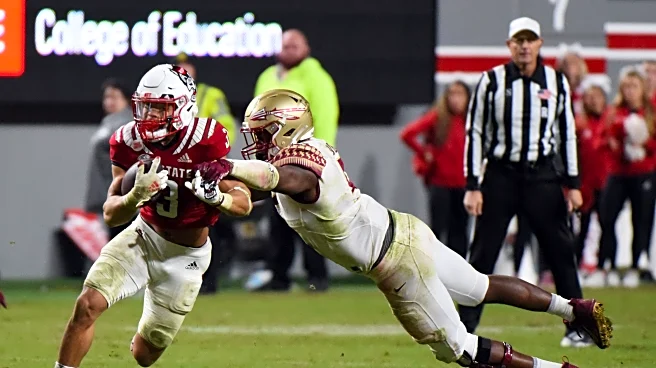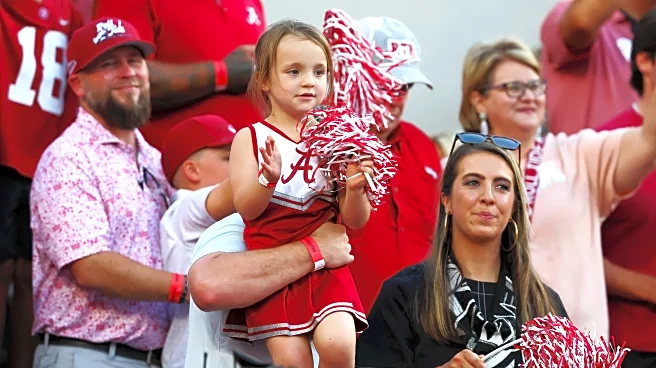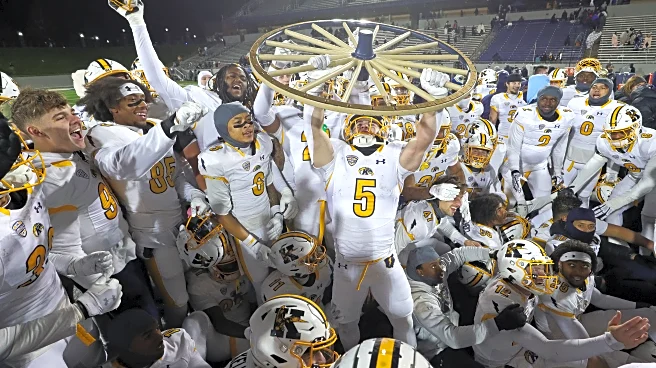What's Happening?
The Ohio Bobcats football team achieved a decisive victory against UMass with a score of 42-14, largely due to an outstanding rushing performance. Sieh Bangura led the charge with a career-high 196 yards
and two touchdowns. Duncan Brune contributed 84 yards and two touchdowns, while quarterback Parker Navarro added 81 yards and two scores. Ohio's ground game was dominant, totaling 363 yards, and the team threw only eight passes compared to 57 rushing plays. Ohio's victory marks their fifth consecutive win against UMass since 2012, maintaining their undefeated record in the series. UMass initially took the lead with a touchdown from Owen Anderson, but Ohio quickly responded, securing a 21-7 lead by halftime.
Why It's Important?
This victory underscores Ohio's strength in rushing offense, as they entered the game ranked 19th in the FBS for rushing yards per game. The team's ability to execute a ground-heavy strategy effectively highlights their tactical prowess and adaptability. For UMass, the loss extends their winless streak, raising concerns about their performance and strategy. Ohio's win solidifies their position in the Mid-American Conference, potentially impacting their bowl game prospects and rankings. The game also serves as a testament to the importance of a strong rushing attack in college football, influencing how teams might strategize in future matchups.
What's Next?
Ohio will likely continue to leverage their rushing capabilities in upcoming games, aiming to improve their standing in the conference and secure a favorable bowl game position. UMass, on the other hand, faces the challenge of reassessing their strategies to break their losing streak. Both teams will need to prepare for their next opponents, with Ohio focusing on maintaining their momentum and UMass seeking to address their weaknesses. The outcome of this game may influence recruiting decisions and adjustments in coaching strategies for both teams.
Beyond the Headlines
Ohio's reliance on a strong rushing game could influence other teams in the conference to prioritize their ground game strategies. This shift might lead to changes in training focus and player recruitment, emphasizing the importance of versatile running backs and offensive linemen. Additionally, UMass's continued struggles may prompt discussions about coaching changes or strategic overhauls to improve their competitiveness. The broader implications of this game highlight the evolving dynamics of college football, where adaptability and strategic innovation are crucial for success.












